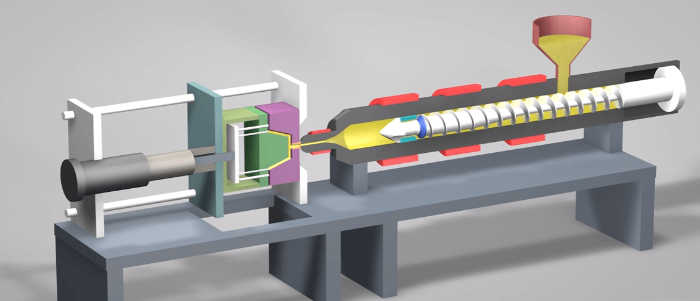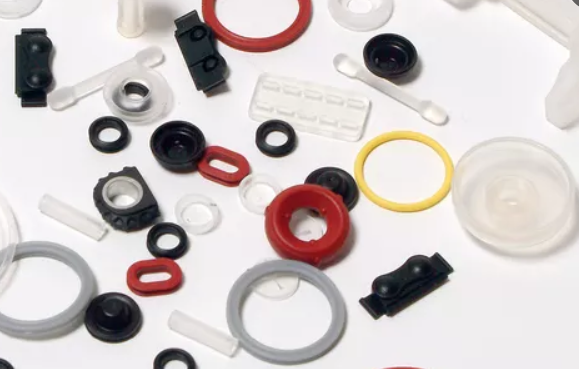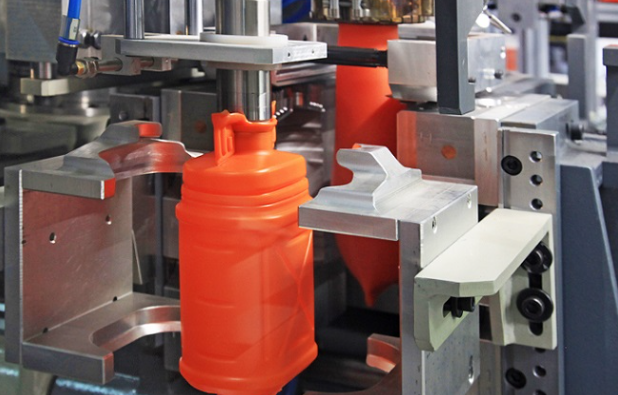Yes, injection moulding is generally fast, efficiently producing large quantities of high-quality plastic parts in short cycles.

Understanding the Speed of Injection Moulding
Injection moulding is a manufacturing process known for its efficiency and speed in producing large quantities of high-quality plastic parts. The speed of this process is a key factor in its widespread use across various industries, including automotive, medical, and consumer products.
Factors Influencing Speed
- Machine Capabilities: The power and design of the injection moulding machine significantly impact the speed. Machines with higher clamping force and injection pressure can mould parts faster.
- Mould Design: A well-designed mould with optimal cooling channels and ejection systems can reduce cycle times.
- Material Used: Different plastics have varying melting points and cooling rates. Materials like polypropylene can be moulded faster than more heat-resistant plastics.
- Part Complexity and Size: Simple parts with thin walls can be produced faster. Larger or more complex parts require longer cooling times, which slows down the process.
- Process Parameters: Adjusting parameters like injection speed, temperature, and pressure can optimize the moulding speed.
Comparison with Other Moulding Techniques
- Blow Moulding: Generally slower than injection moulding, especially for complex shapes. However, it’s more suitable for hollow objects like bottles.
- Compression Moulding: Slower due to the longer curing times of thermoset materials, but cost-effective for large, less complex parts.
- Rotational Moulding: Much slower process, ideal for large, hollow parts. It has lower tooling costs but longer cycle times compared to injection moulding.
Technological Advancements in Injection Moulding
The field of injection moulding has seen significant technological advancements, primarily aimed at increasing efficiency, reducing costs, and enhancing the quality of the final products. These innovations not only improve the speed of the process but also extend the range of applications and materials that can be used.
Innovations for Speed Enhancement
- Advanced Machine Controls: Modern injection moulding machines incorporate sophisticated control systems. These systems optimize the process parameters in real-time, significantly reducing cycle times.
- Robotics and Automation: Automation using robotics has streamlined the removal and handling of parts. This reduces human intervention and accelerates the production process.
- Improved Mould Design Software: Advances in software for mould design, such as 3D printing for rapid prototyping, allow for quicker design and testing of moulds, reducing the overall time from concept to production.
- Energy-Efficient Motors: The adoption of servo-electric and hybrid motors has resulted in machines that consume less power, thereby reducing operational costs while maintaining high-speed performance.
- High-Performance Materials: Development of new polymer blends and composites has led to materials that flow more easily and cool more rapidly, cutting down the moulding time.
Case Studies: Faster Moulding in Practice
- Automotive Industry: Implementing high-speed, high-pressure injection moulding machines has allowed for faster production of intricate parts like car bumpers, reducing cycle times by up to 30%.
- Medical Device Manufacturing: Precision injection moulding with automated quality control has enabled faster production of medical devices, with increased repeatability and reduced waste.
- Consumer Electronics: The use of advanced polymers and optimized mould designs has sped up the production of components for consumer electronics, achieving thinner, more precise parts with shorter cycle times.

Materials Used in Injection Moulding
Injection moulding utilizes a diverse range of materials, each offering unique properties suitable for various applications. The choice of material significantly impacts the efficiency and quality of the final product.
Material Properties Affecting Moulding Speed
- Melting Point: Materials with lower melting points, such as Polypropylene, can be moulded faster due to quicker heating and cooling cycles.
- Viscosity: Low viscosity materials flow more easily into the mould, reducing injection and cooling times.
- Thermal Conductivity: Materials with high thermal conductivity cool down faster, shortening the cycle time.
- Strength and Flexibility: High-strength materials might require longer cooling times to achieve the desired properties, impacting the moulding speed.
Selection of Optimal Materials for Speed
- Polyethylene (PE): Known for its low cost and fast moulding capabilities, ideal for producing containers, bottles, and bags.
- Polypropylene (PP): Offers a balance between low cost and fast processing times, widely used in automotive parts, consumer goods, and packaging.
- Polystyrene (PS): Fast to mould due to its low melting point, commonly used for disposable cutlery, CD cases, and housings.
- Acrylonitrile Butadiene Styrene (ABS): Though slightly slower to mould than PE and PP, ABS offers higher strength and is widely used in electronic housings, auto parts, and LEGO bricks.
- Nylon: Known for its strength and flexibility, nylon is used in applications where durability is crucial, such as gears and bearings. However, it has longer moulding times due to its higher melting point.
Challenges and Limitations
Injection moulding, despite its numerous advantages, faces several challenges and limitations that impact its application and efficiency. Understanding these issues is crucial for optimizing the process and achieving the desired outcomes.
Speed vs. Quality Trade-offs
- Cycle Time Reduction: While reducing cycle times increases production speed, it can lead to issues such as incomplete filling of the mould or inadequate cooling, affecting the quality of the final product.
- Material Limitations: Some high-performance materials require longer cycle times to achieve desired properties, impacting overall speed.
- Mould Design Complexity: Complex mould designs may enhance product features but often result in longer cycle times and potential quality issues due to uneven cooling or material flow.
Addressing Common Speed-related Issues
- Optimizing Process Parameters: Careful adjustment of injection speed, pressure, and temperature can help balance speed and quality.
- Using Rapid Cooling Systems: Implementing advanced cooling systems in the mould can reduce cooling times without compromising product quality.
- Material Selection: Choosing the right material for the specific application can greatly influence the balance between speed and quality. For example, selecting a material with the right viscosity and melting point for the product’s requirements can optimize cycle times.
- Automation and Robotics: Incorporating automation in the moulding process can reduce human error and increase consistency, which is vital for maintaining quality at high production speeds.

Optimizing the Injection Moulding Process
Optimization of the injection moulding process is key to achieving high efficiency, speed, and quality in manufacturing. By implementing various techniques and leveraging the latest technologies, manufacturers can significantly enhance the performance and output of their injection moulding operations.
Techniques for Increasing Speed
- High-Speed Machinery: Utilizing high-speed injection moulding machines can significantly reduce cycle times. These machines often feature enhanced hydraulic systems and faster response times.
- Optimized Mould Design: Designing moulds with efficient cooling channels and streamlined ejection mechanisms can reduce cycle time. Simulations can help in designing moulds that facilitate faster cooling and easier part release.
- Material Preprocessing: Pre-drying materials and maintaining them at optimal temperatures can shorten the time needed for melting and injection.
- Process Parameter Optimization: Adjusting parameters like injection speed, pressure, and temperature for each specific material and part design can lead to faster cycles without compromising quality.
Software and Automation in Speed Optimization
- CAD and Simulation Software: Using advanced CAD software for mould design and simulation can identify potential issues before production, reducing trial and error. Simulation software helps in predicting and optimizing flow, cooling, and warping.
- Process Monitoring and Control Systems: Incorporating real-time monitoring and control systems can adjust process parameters on-the-fly, optimizing cycle times and reducing waste.
- Automated Material Handling: Automation in material feeding and handling can reduce downtime between cycles, ensuring a constant supply of material to the machine.
- Robotics for Part Handling: Implementing robotics for part removal and post-processing tasks like trimming and assembly can significantly reduce cycle times and increase overall efficiency.


